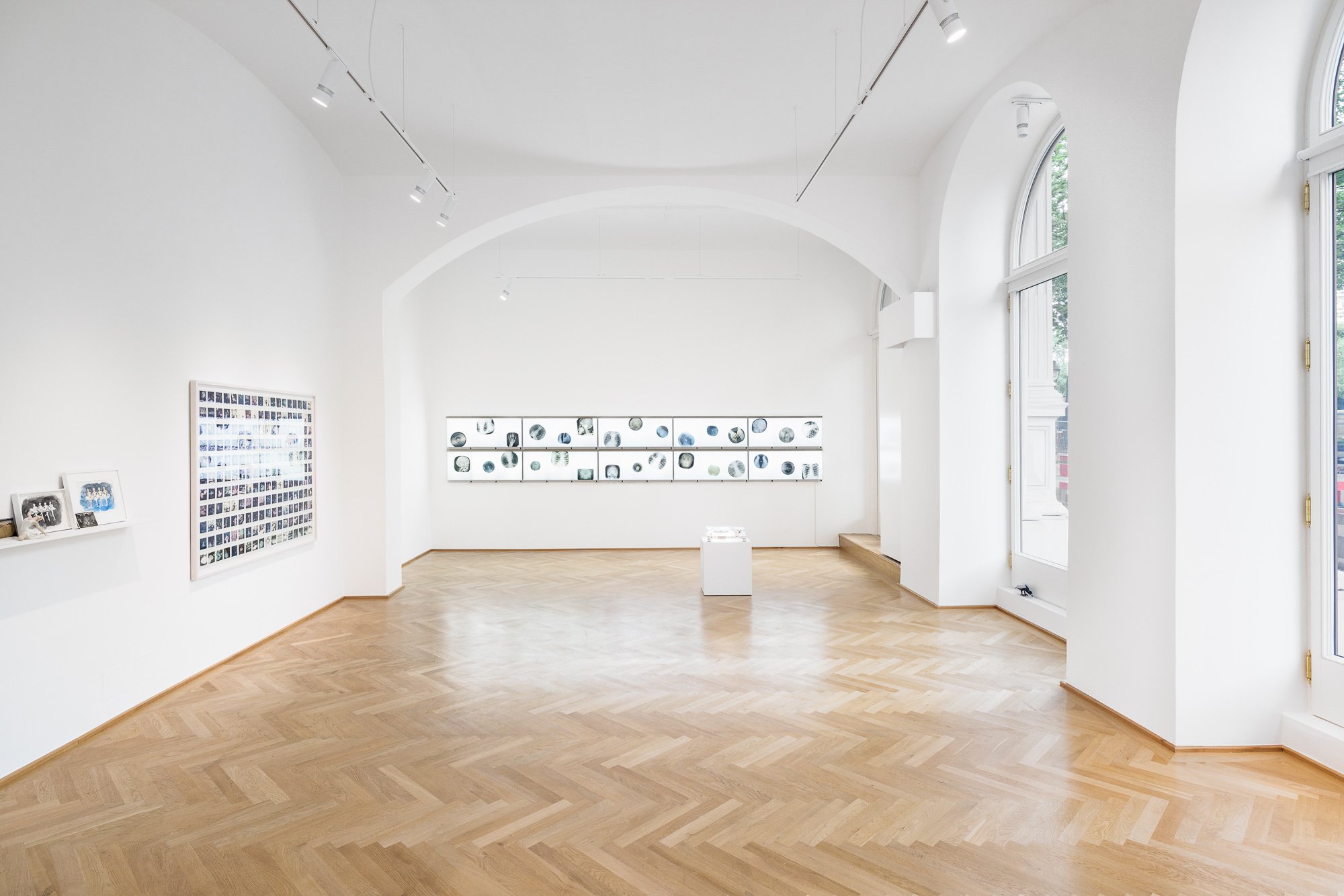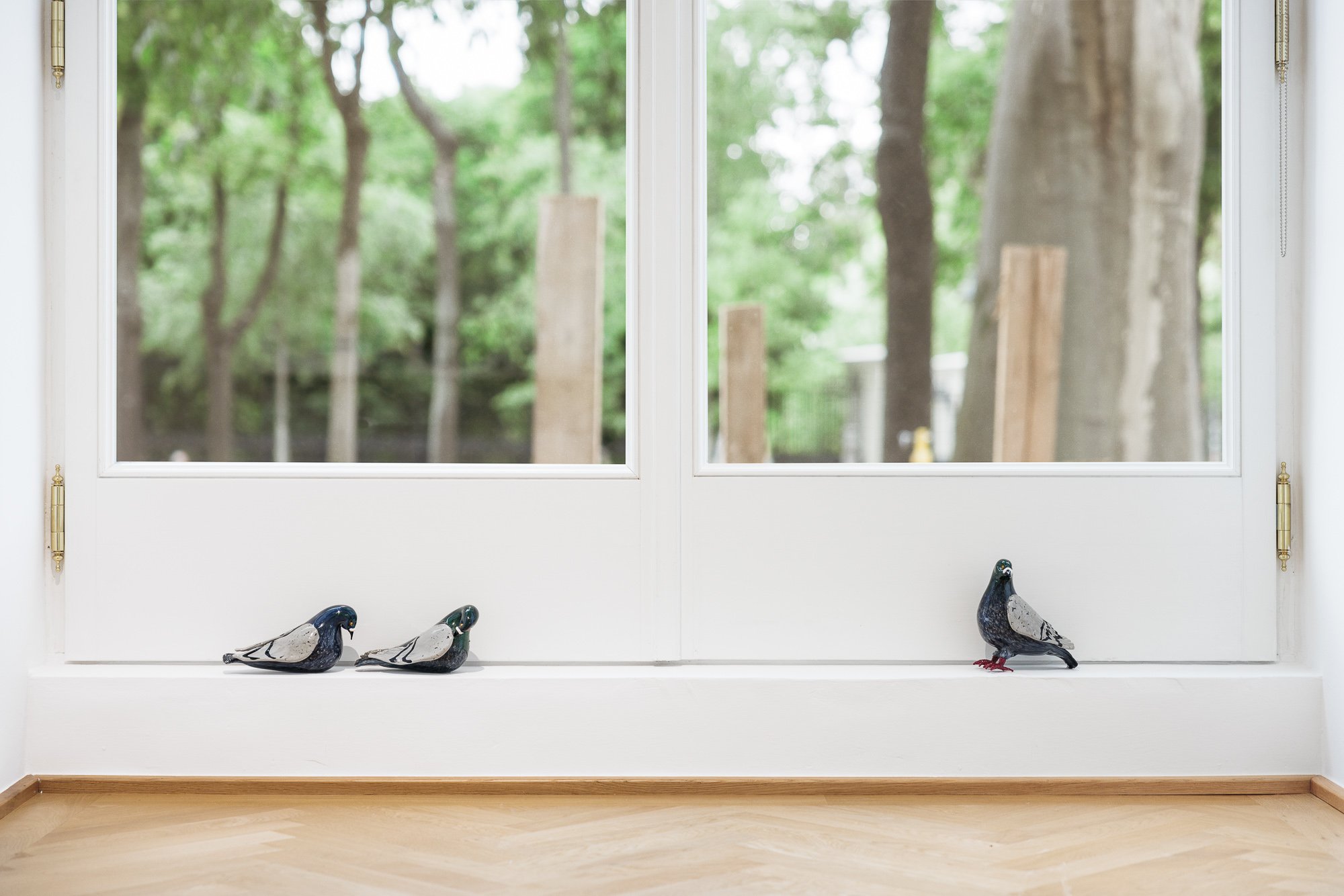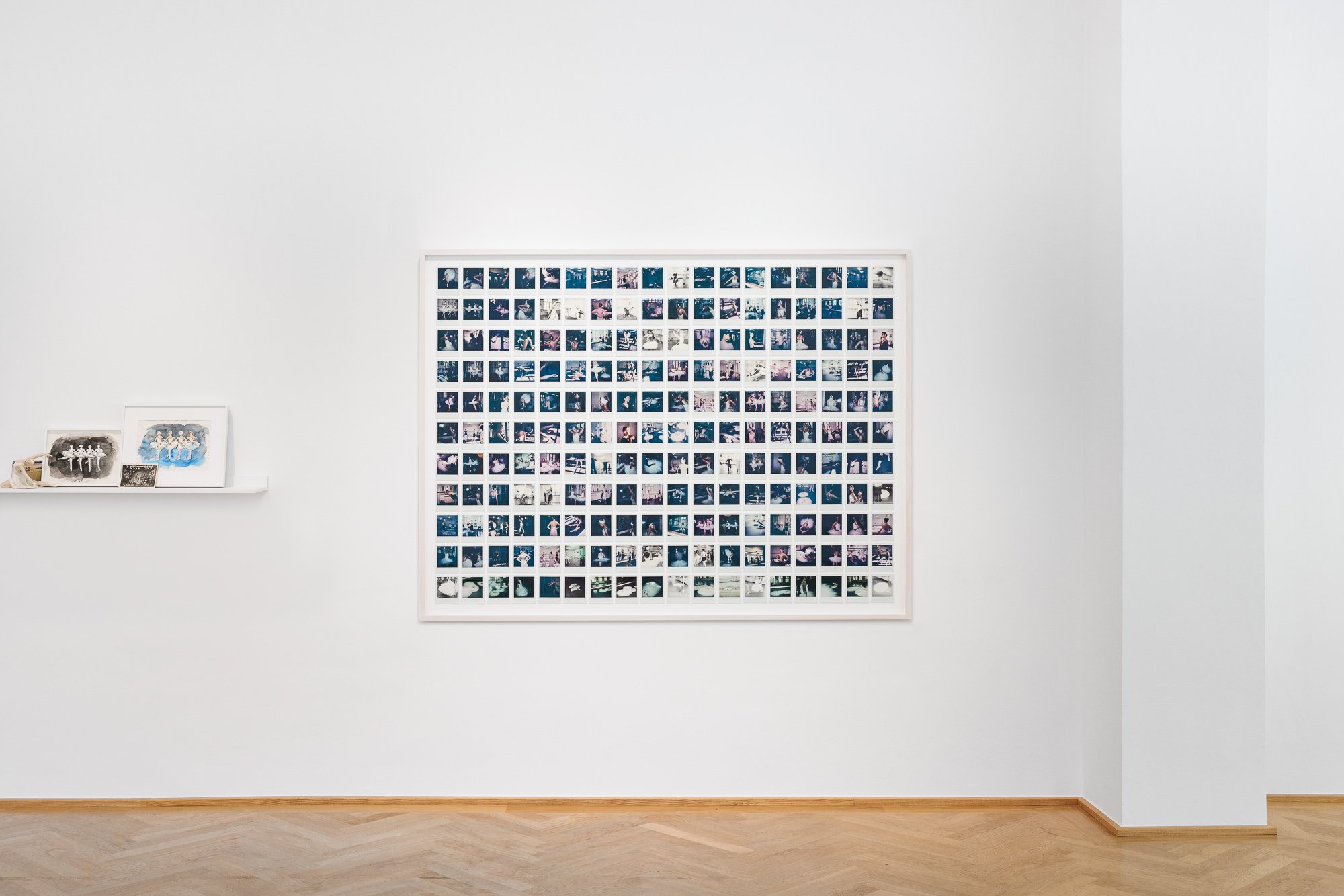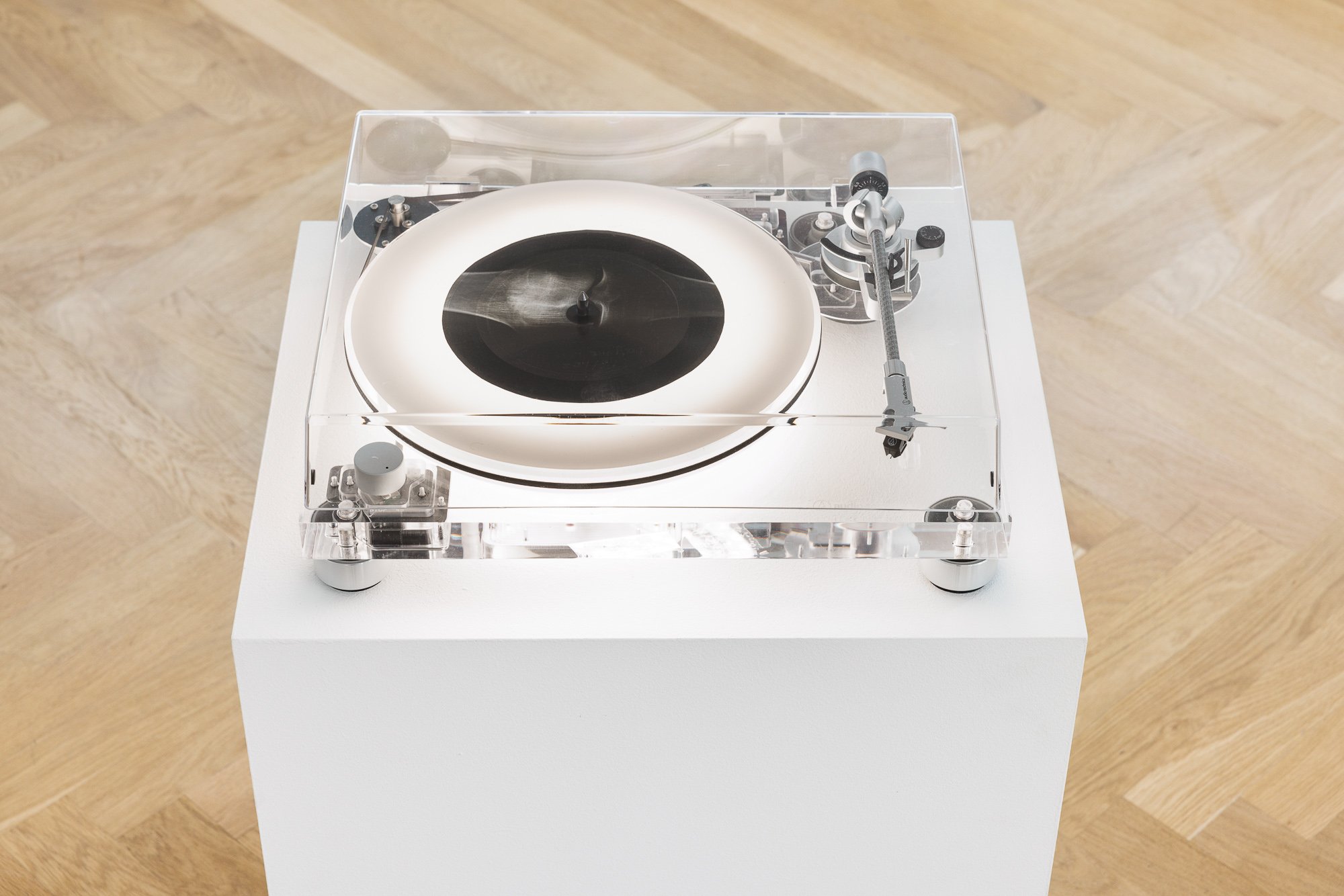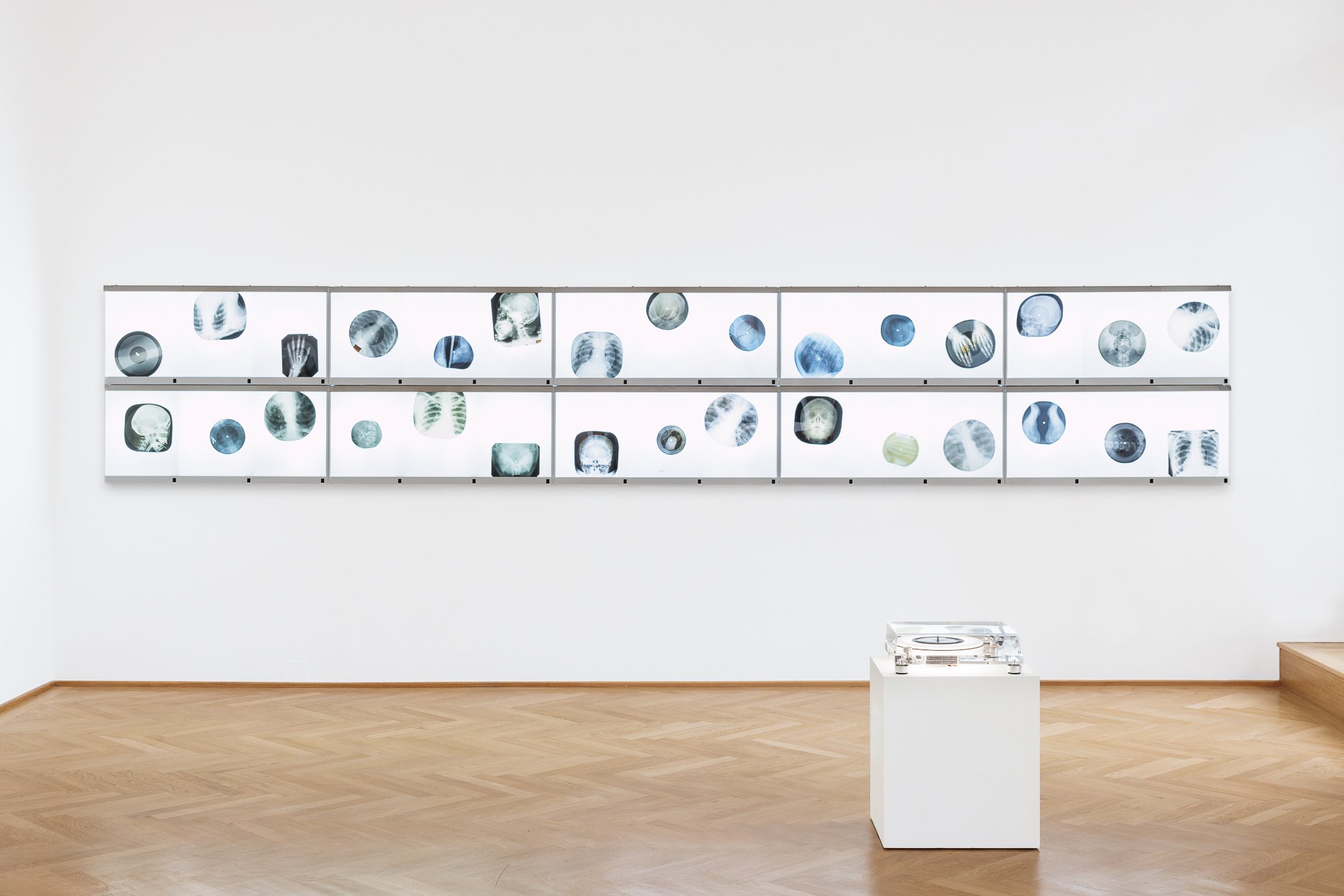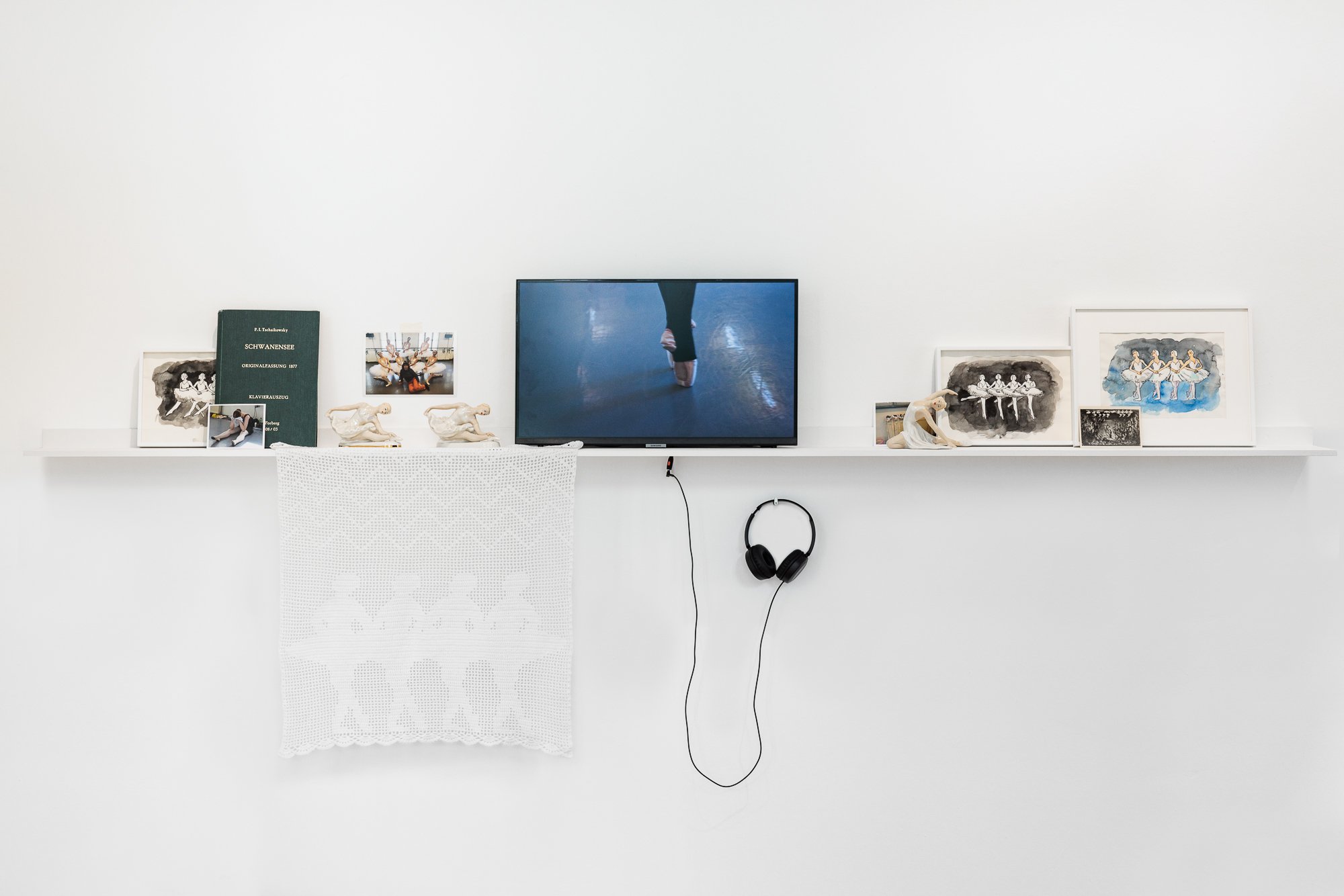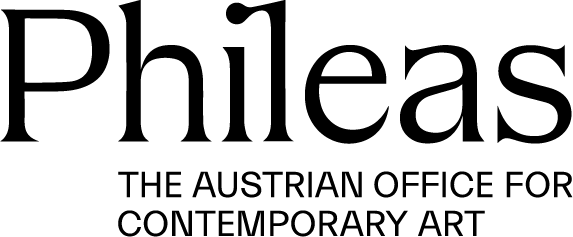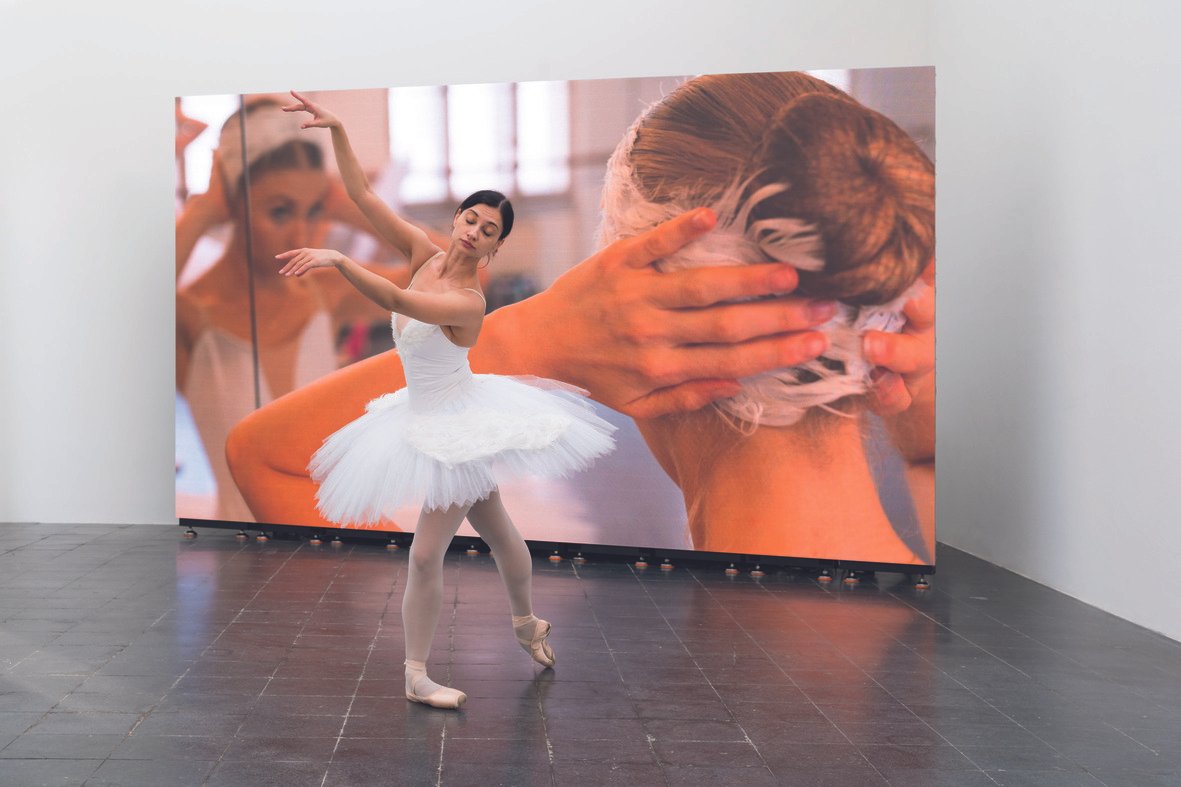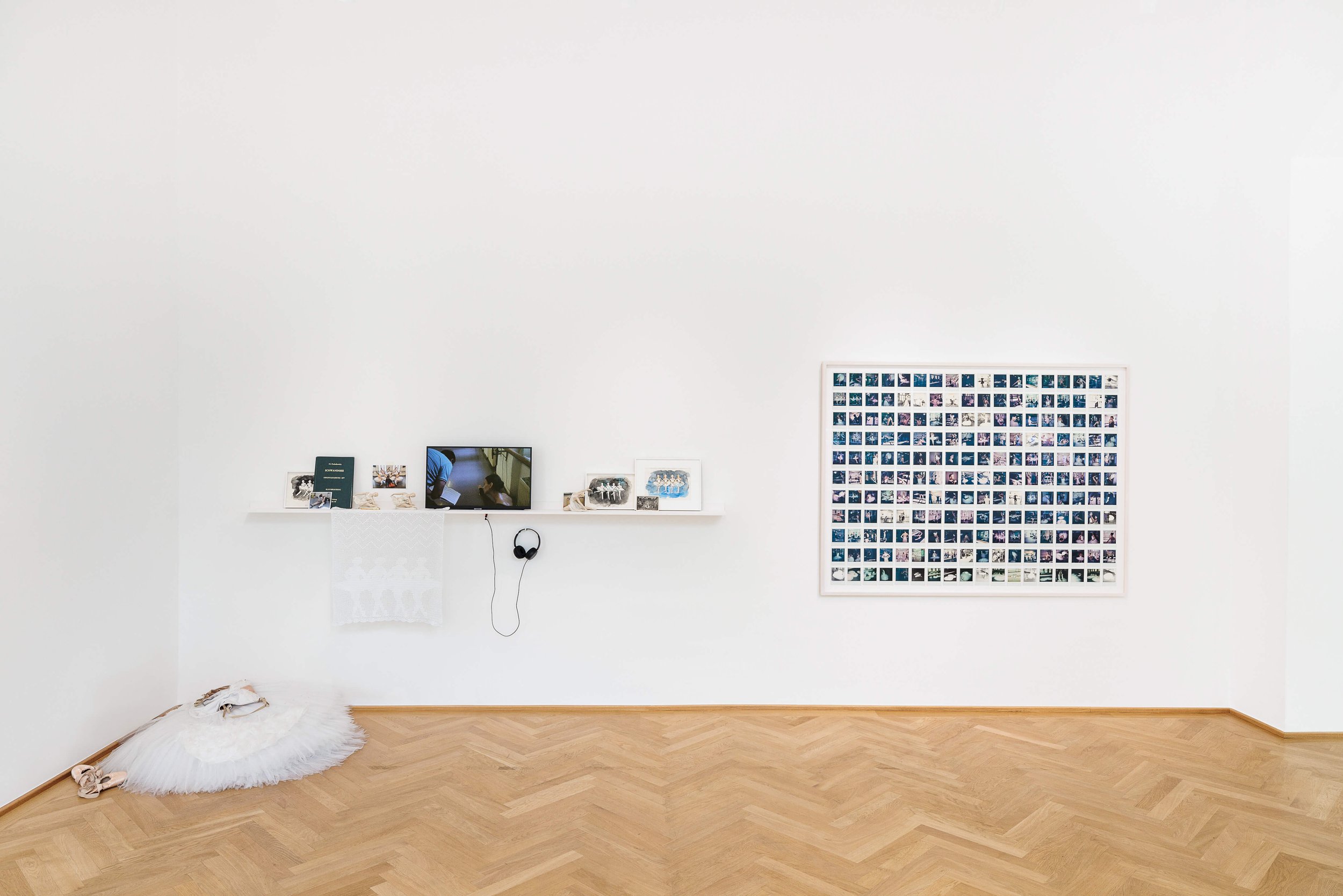Anna Jermolaewa: Assemblé
A collaboration with the Austrian Pavilion at the 60th Biennale di Venezia
Phileas, Opernring 17, Vienna
8 May – 14 September 2024
Anna Jermolaewa & Oksana Serheieva, Rehearsal for Swan Lake, 2024. Photo: Markus Krottendorfer / Bildrecht
Anna Jermolaewa, Installation view of Assemblé at Phileas, 2024. Photo: kunstdokumentation.com/Manuel Carreon Lopez
For 10 years Phileas has been closely affiliated with the Austrian Pavilion at the Venice Biennale. In 2024 we again collaborated with the national pavilion to support the production of Anna Jermolaewa's exhibition, and in parallel presented a group of new and existing works by the artist in Vienna.
Jermolaewa's artistic practice is significantly influenced by her childhood and youth in the Soviet Union, her activities as a dissident, and her experiences as a refugee. A keen observer of human coexistence, its social conditions and political prerequisites, her art focuses on seemingly insignificant manifestations of everyday life, which she questions in a critical but at the same time humorous manner. The works in the exhibition referenced moments in the artist’s own life over the last 35 years, from her arrival in Vienna as a political refugee from the former Soviet Union, to the present-day conflict in Ukraine.
The central work on display at the Austrian Pavilion is her new video installation Rehearsal for Swan Lake (2024). Created in collaboration with the Ukrainian ballet dancer and choreographer Oksana Serheieva, it shows a group of dancers rehearsing scenes from Tchaikovsky’s “Swan Lake”. Jermolaewa is referring to a measure of censorship commonly employed in the former Soviet Union, in which the famous ballet would be broadcasted often for days on end during times of political unrest in order to distract civilians. The presentation of Rehearsal for Swan Lake in Vienna offered a glimpse behind the scenes, expanded the video installation to include the artist’s preparatory research and production materials, including a series of Polaroid pictures showing the ballet dancers during rehearsals.
A newly produced work in the exhibition in Vienna was the autobiographical video work Aleksandra Wysokińska / 20 Years Later / 35 Years Later (2009/2024), which documents Jermolaewa’s reunion with the woman who helped her escape from the USSR in 1989. Wysokińska sheltered Jermolaewa and her partner at her home in Kraków for a week and then helped her travel on to Austria, where both were granted asylum. The video shows the first meeting of the two women after 20 years, and recounts Jermolaewa’s experience as a refugee interwoven with the life story of her generous helper. At the exhibition’s opening in May 2024, exactly 35 years have passed since their first encounter. To mark this anniversary, the artist again visited Aleksandra Wysokińska to film a new conversation and expand the original work.
Anna Jermolaewa (born in 1970 in Leningrad, USSR) works with a wide range of media, including video, installation, painting, photography, sculpture and performance. After being accused of anti-Soviet agitation and propaganda, she was forced to flee in 1989 to Austria, where she was granted political asylum. In 2019, Jermolaewa was appointed professor of Experimental Art at the University of Arts Linz. Along with numerous solo exhibitions, she has participated since 1999 in major group exhibitions including the 48th Venice Biennale (1999); the Moscow Biennale of Contemporary Art (2007, 2015); the Beijing International Art Biennale (2010); the Berlin Biennale (2012); and the Gwangju Biennale (2014). Jermolaewa was recently awarded the Karl Renner Prize of the City of Vienna for her social commitment as a member of the Austrian refugee association "Ariadne − Wir Flüchtlinge für Österreich".
Opening hours at Opernring 17, Vienna
Tuesday - Friday 11:00am - 5:00pm
Saturday 11:00am - 3:00pm
& by appointment
-
Jasper Sharp: A difference between the exhibition in Vienna and that shown
at the Austrian Pavilion in Venice is the inclusion of some preparatory material related to the production of Rehearsal for Swan Lake. You decided to show some Polaroid photographs that document the making of the work. How did these pictures come about and what do they represent to you?
Anna Jermolaewa: You really get a glimpse behind the scenes of the entire production, which I have been living with for many months. The music to ‘Swan Lake’ is with me the whole time, playing in my head, even in my sleep. I am generally interested in showing the arduous production process, not just the result. The work involved ten full days of shooting ballet rehearsals.
Every day from 9am to 4pm. By the end, I had almost 40 hours of material to sift through. It was important to me to not only show the pretty pictures we are used to seeing from the ballet but also all the hard work that goes on before the performance. All the mistakes, which gradually become fewer and fewer, the bleeding, twisted feet, the desperation and the joy. I had no idea just how demanding the job of a ballet dancer really is. I hadn’t known much about the ballet and had used it only as a code for something else - as a symbol of regime change. This happens to me time and again, that I am able to discover new worlds through my work. In this instance, the ballet dancer Oksana, and all the other amazing women who we worked with, showed me their world.
JS: The images remind me somehow of Edgas Degas, who often depicted dancers while they were taking breaks, or simply sitting there exhausted.
AJ: Funny you should mention that. The various situations during the rehearsals did indeed often remind me of Degas. During these ten days, I was taking photographs all the time. I created 180 Polaroid pictures, which are now all shown in the exhibition. I took photographs especially during breaks. The pictures meant a lot to everyone. The dancers were always looking forward to seeing them after the day’s work. They would place all the Polaroids next to one another and look at them. This became a ritual, an important moment of relaxation and a lovely end to the day for everyone.
JS: You are also showing several objects related to Rehearsal for Swan Lake, almost like a collection of memorabilia. Did you gather all of them during the preparations for the work?
AJ: Yes, exactly, I collected them during the preparations. It was not always easy to get these objects to Austria. Some of them were sent to me via diplomatic mail, as this was the only way. This was also the case with the Ribs.
JS: Could you tell me a little more about this work?
AJ: The Ribs are musical records on medical X-ray images. Every record is unique. Aside from the fact that the X-ray image itself is also an individual picture of the bones of a person. I had to search for these records in a painstaking process through the Russian equivalent of eBay. It took me a long time before I located them somewhere in the Russian countryside. They are originals from the 50s and 60s. They do not last long, they stop working if you play them too often. I believe that I have now purchased most of the originals that were still out there. A major problem was how to pay for them and get them to Vienna. PayPal doesn’t work there. The only payment method that works is via the Russian bank Sberbank. Seeing as I don’t have a Sberbank card, I initially asked all my friends in Moscow to drain their bank accounts, to the point that I started to feel guilty. Later, I found someone in Vienna who made the transfers from his account and bought the records for me. We would meet, like in a spy movie, on a bench in the Stadtpark, and I would hand over a lot of cash to him. We did this a couple of times. The transport to Austria would not have worked via the regular postal service. And so the records, like the memorabilia, had to be sent to Austria via diplomatic mail.
JS: The Ribs themselves have existed as a work for a while, haven’t they?
AJ: The presentation of the Ribs has since changed. I realized that the records didn’t come across as I had intended. People didn’t realize that they could be played. So I kept working on the presentation, and the Ribs have now become a spatial installation. We have developed a record player with a transparent turntable on which they can be played. And the records are placed on medical X-ray light boxes, grouped into individual blocks. I created a playlist for each block via Shazam. They include songs by The Beatles, The Doors, The Beach Boys, and so on. It is inconceivable that such beautiful songs could land you in prison.
JS: There is also a performative aspect.
AJ: Yes, once a day, we put on a record. Unfortunately, I can’t do this more often, as the records have a limited lifespan.
JS: You are also showing an updated version of an older video work in Vienna. Could you tell me about it?
AJ: I produced the work Alexandra Wysokinska/20 Years Later in 2009. It is about the woman from Krakow in Poland who, 20 years previously, helped me come to Austria. She planned and financed my escape from Russia, and I cannot thank her enough for this. I started looking for her in 2009 and finally found her in Paris, where she had emigrated in the meantime. To thank her, I made a film about her. It was important to both of us to compare and align our memories of this time. Now, this video work is already 15 years old. In May 2024, 35 years will have passed since I met Alexandra and she organized our escape to Austria. Sheis someone you would call an “escape helper” today. It is incredibly important to me to show the film again. Everything I do today to help Ukrainian refugees is nothing more than giving back what she gave me. The film complements the group of works exhibited at Phileas with my personal experience as a refugee, which plays an important part in my presentation at the Austrian Pavilion too. This brings my experience full circle. I will now meet Aleksandra again 35 years on and film a new conversation to expand the original work.
JS: And finally, there is a completely new work that is being shown for the first time.
AJ: Yes, through my many visits to Venice last year, I got to know Adriano Berengo who has a fantastic glass workshop on the island of Murano. We have developed a new project together. It’s about something that plays a recurring role in my work and also symbolizes Venice: pigeons. I’m keen to improve the social image of pigeons a little, like in my watercolours titled Famous Pigeons from 2021. Adriano’s workshop employs people who can produce incredible things out of glass. They practically translated my painted watercolours into glass.
Vienna, March 2024
-
